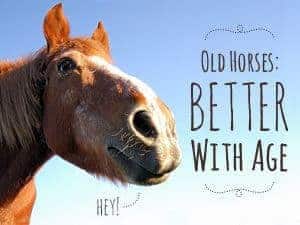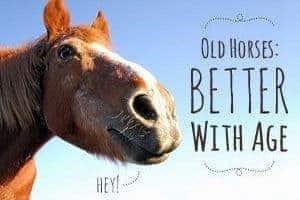Breeding the Old Gray Mare
- Topics: Old Horses: Better With Age
I consider myself pretty lucky to live and work in the region I do. Central Kentucky is one of the largest–if not the largest–Thoroughbred nurseries in the world, and it’s hard to drive anywhere (with the sole exception of downtown Lexington) without running into stallions, broodmares, and/or babies. Just driving the seven miles from our office to my boarding barn, I pass three major breeding operations and several smaller ones with fields full of leggy foals playing, broodmares ready to pop, or weanlings and yearlings growing up.
Especially during the late summer and fall, once the mares have escaped from their foals and are spending days basking in the sun, I often notice that some individuals look decidedly older than their pasture mates. It’s easy to pick out a slightly sway backed mare jogging with an arthritic gait a few steps behind her younger counterparts, or a graying mare “politely suggesting” to a younger-looking mare that she’d better move unless she wants a chunk taken out of her haunches.

I’m not a horse breeder, but for years I’ve toyed with the idea of breeding Sadie, my now 16-year-old Warmblood mare, to produce my next event mount
Create a free account with TheHorse.com to view this content.
TheHorse.com is home to thousands of free articles about horse health care. In order to access some of our exclusive free content, you must be signed into TheHorse.com.
Start your free account today!
Already have an account?
and continue reading.

Related Articles
Stay on top of the most recent Horse Health news with















